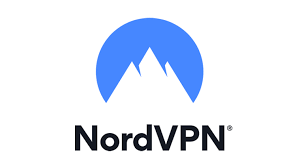- Using Unapproved Apps
- Understanding Shadow IT
- The Risks and Consequences of Shadow IT
- The Role of the IT Department
- Securing the Remote Workforce
- Preventive Measures and Mitigation Strategies
- Conclusion: Embracing IT and Business Alignment
Using Unapproved Apps
The hidden security threat posed by employees, many companies rely on official software and applications to keep their data safe. However, employees often use unapproved apps that can expose the organisation to serious risks. When staff use these unvetted tools, it creates hidden security threats that can lead to data breaches and loss of sensitive information.

Shadow IT occurs when employees bypass official processes to use their preferred tools for work. This can happen for various reasons, such as convenience or a lack of available resources. Unfortunately, while these apps may seem harmless, they can compromise the entire security posture of the organisation.
Awareness of Shadow IT is crucial for protecting a company’s data. Leaders need to address this issue by promoting safe practices and providing approved alternatives. By understanding the risks associated with unapproved applications, organisations can better safeguard their information and maintain a secure work environment.
Understanding Shadow IT

Shadow IT refers to the use of software and hardware by employees without formal approval from their organisation. This often happens because workers want to be more productive. They may choose tools like cloud applications, messaging apps, and project management tools that are not sanctioned by IT departments.
Common forms of Shadow IT include:
- SaaS (Software as a Service) applications
- Cloud storage solutions
- Personal devices under a Bring Your Own Device (BYOD) policy
Employees may download productivity tools that help with their tasks. While this can enhance efficiency, it brings significant risks. These applications can have weak security measures. They may expose sensitive company data to cyber threats.
Users might use their personal devices to access company resources. This can lead to data leaks if the proper security measures are not in place. Unauthorized applications can bypass a company’s security protocols, making it harder for IT teams to monitor and protect their networks.
The lack of oversight means that employees could be unaware of risks associated with these tools. Training and awareness are crucial. It helps employees understand the potential dangers and security implications of using unapproved apps.
Managing Shadow IT requires clear policies and open communication between employees and IT departments. Proper strategies can reduce risks and enhance security while allowing employees to work efficiently.
The Risks and Consequences of Shadow IT

Shadow IT introduces several important risks and consequences that organisations must address. These risks can expose sensitive data, create compliance issues, and lead to significant financial impacts. Understanding each aspect helps in managing the threats that come with unapproved applications.
Security Vulnerabilities Exposed
Using unapproved applications can increase security vulnerabilities within an organisation. These apps may not meet the company’s security standards, leading to potential data breaches.
For example, if an employee uses a cloud service without IT’s knowledge, it may lack proper encryption. This can lead to unauthorised access to sensitive data.
Moreover, unpatched vulnerabilities in these applications can create an expanded attack surface for cybercriminals. Employees may inadvertently expose the organisation to cyberattacks or data leaks without realising it.
Ensuring endpoint security and monitoring all tools used within a company is crucial to reduce these risks.
Compliance and Regulatory Challenges
Shadow IT poses serious compliance risks. Many organisations must adhere to regulations like GDPR, HIPAA, CCPA, and other frameworks.
When employees use unapproved applications, it becomes difficult to maintain compliance with these standards. Non-compliance can lead to severe penalties and financial risks.
For example, if sensitive customer data is stored on a personal app, it may not comply with regulatory requirements. This creates compliance violations that can harm the organisation’s reputation and result in costly fines.
Proper vendor management and monitoring of applications are essential for maintaining compliance.
Operational and Financial Impacts
The use of shadow IT can also negatively affect an organisation’s operations. It can lead to data silos, where information is spread across various apps instead of being centralised.
This can hinder productivity and make it challenging for teams to access necessary information. The need for backup and recovery assistance may also grow, increasing operational costs.
Financially, organisations can face losses due to data breaches or compliance fines stemming from shadow IT. The hidden costs of managing these risks can escalate quickly, impacting the bottom line.
Addressing shadow IT can help organisations protect data and improve overall efficiency.
The Role of the IT Department

The IT department plays a crucial role in managing shadow IT by enhancing visibility and control over the applications in use. It also establishes effective governance to protect the organisation’s data.
Enhancing Visibility and Control
To tackle shadow IT, the IT department must implement monitoring tools that provide insight into the applications employees use. These tools can track unauthorised services and alert the IT team to potential risks.
Endpoint Detection and Response (EDR) software can be crucial. It helps detect unusual activity, ensuring that unapproved applications do not compromise the organisation’s data security.
In addition, regular audits should be conducted to evaluate the use of cloud storage services. By understanding what applications employees favour, the IT department can address security gaps effectively.
Establishing Effective Governance
The IT department must create clear governance policies that outline acceptable software and services. These policies should include guidelines on data protection and user responsibilities.
Training sessions can educate employees about the risks of shadow IT and the importance of using approved applications. Governance policies need to be enforced with strict compliance measures, allowing the IT team to maintain control effectively.
To ensure success, regular reviews of these policies will help adapt to new risks and technological changes. This proactive approach allows the IT department to safeguard the organisation’s resources and data more effectively.
Securing the Remote Workforce

The increasing use of remote work has led to new security challenges for organisations. Employees often use unapproved applications, known as shadow IT, which can expose businesses to cyber threats and data breaches. Addressing these risks requires a strategic approach.
Managing Security Risks in the Digital Workplace
Organisations must identify potential security gaps stemming from the use of shadow IT. Regularly auditing applications used by employees can help spot unapproved software. This process should involve creating a list of tools currently in use and assessing their security features.
Moreover, educating staff about the risks of using unauthorised applications is crucial. Training should include information on data privacy and the importance of adhering to company policies. A culture of security awareness encourages employees to be proactive in using approved tools.
Implementing Cybersecurity Best Practices
To protect sensitive data, organisations should adopt best practices in cybersecurity. Using multi-factor authentication (MFA) can significantly reduce unauthorised access. This adds an extra layer of security, ensuring that only verified users can access critical information.
Additionally, companies should implement identity and access management (IAM) systems. IAM helps to manage who has access to what data, thus limiting exposure. Establishing strict user policies helps prevent data breaches and protects company information.
Encouraging the use of secure alternatives to unapproved apps is also important. Offering vetted tools that fit employee needs can reduce the temptation to seek out shadow IT solutions.
Technological Solutions for Managing Shadow IT
Utilising cloud access security brokers (CASBs) can aid in monitoring and managing shadow IT. These platforms provide visibility into applications being used and help enforce security policies in real-time. They can detect risky behaviour and alert security teams to potential threats.
AI-driven solutions can also enhance security measures. These technologies can analyse user behaviour and spot anomalies, quickly identifying possible security risks. Implementing such tools allows organisations to act swiftly and mitigate threats before they escalate.
By combining technology with strong policies and user education, businesses can create a more secure remote work environment.
Preventive Measures and Mitigation Strategies

Addressing Shadow IT requires focused actions to enhance security and reduce risks. By prioritising employee education and implementing strategic controls, organisations can create a safer environment against potential threats.
Employee Awareness and Education
Employee education is crucial in combating Shadow IT. Staff must understand the risks associated with using unapproved software and applications. Regular training sessions can highlight security threats, such as data leaks and cyberattacks, linked to unauthorised tools.
Organisations should develop clear policies outlining the approved software and the reasons for compliance. This can alleviate confusion and promote adherence. During training, specific Shadow IT examples can be presented to illustrate real-world consequences of non-compliance.
Key points to cover:
- Importance of using approved SaaS products.
- Risks of compliance breach and data protection issues.
Strategies for Risk Reduction
To effectively reduce risks, companies need a multi-faceted approach. Establishing strong security protocols is a must. This includes monitoring network traffic for signs of Shadow IT and implementing access controls.
Regular audits of all software in use can help identify unauthorised tools. In addition, companies can use technologies that allow for sanctioned application usage while restricting unapproved apps. This enhances governance while protecting sensitive data.
Recommended strategies:
- Use of secure virtual environments for sensitive tasks.
- Implementing a clear process for requesting new applications.
Conclusion: Embracing IT and Business Alignment

Addressing shadow IT is essential for any organisation. It can enhance productivity but also increases security risks. When employees use unapproved apps, the organisation’s digital assets may be exposed.
To tackle this issue, IT departments should collaborate closely with business units. This partnership can streamline the approval process for new applications. Understanding user needs helps create a balance between flexibility and security.
Best Practices for IT and Business Alignment:
- Clear Communication: IT must communicate policies clearly to employees.
- Regular Training: Offer training on approved tools and security best practices.
- Feedback Loop: Encourage feedback from users about their app needs.
By aligning IT with business strategies, organisations can create a safer environment. This collaboration can reduce shadow IT usage while still supporting employee productivity.
Fostering this relationship helps ensure that both IT and business goals are met. It allows for better management of digital assets, keeping the company secure and efficient.






